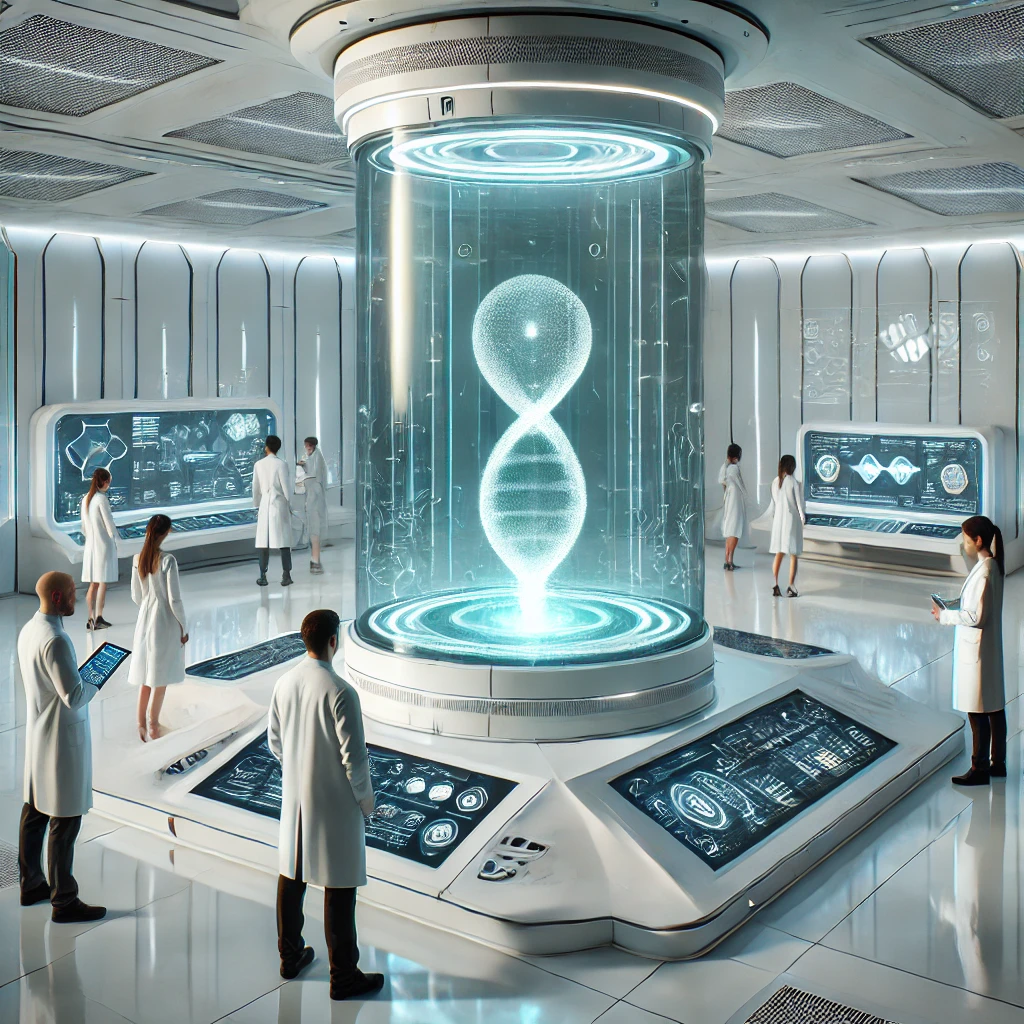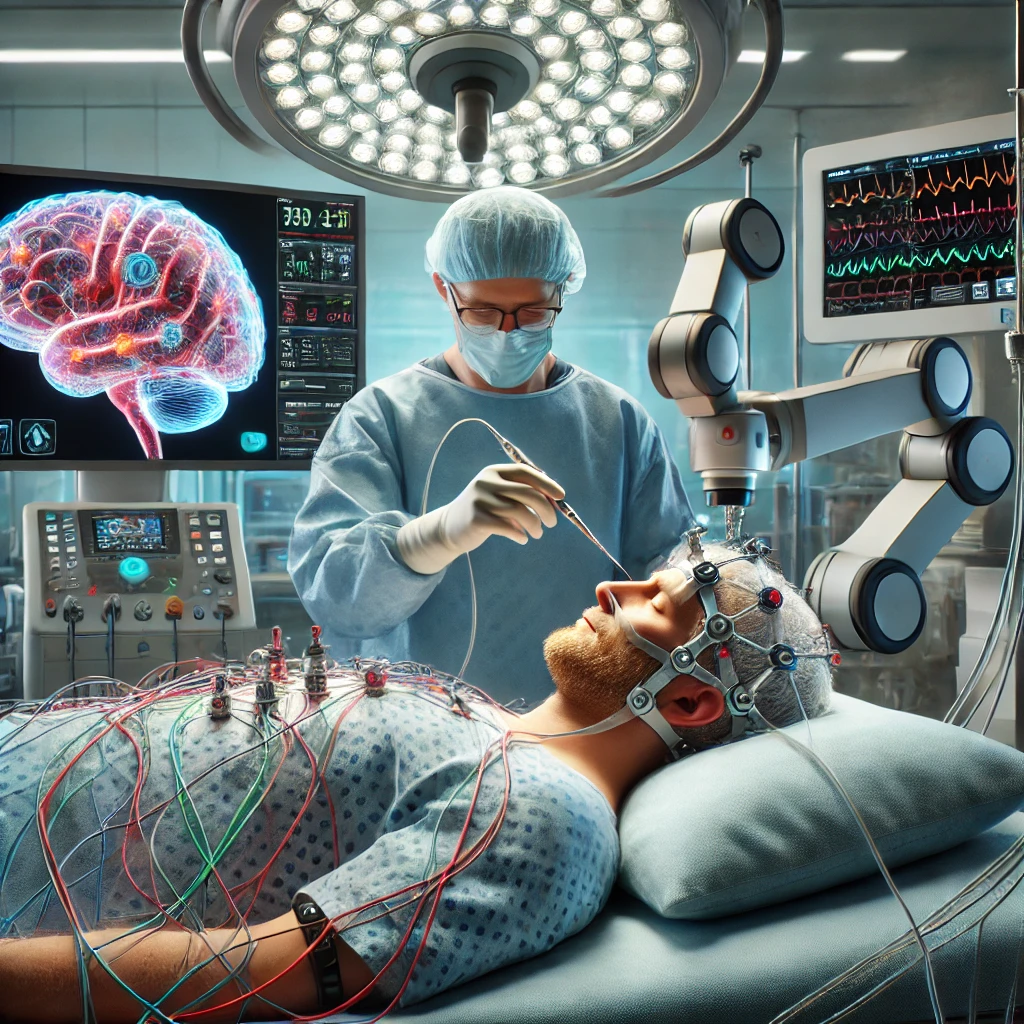
Imagine you hurt your arm really badly and can’t move it anymore. That’s what it’s like for people who have brain injuries. Sometimes, they can’t move their arms or hands.
Scientists are trying to help people who have brain injuries. They’ve been working on something called Deep Brain Stimulation, or DBS for short. It’s like a special kind of treatment that helps the brain work better.
Recently, scientists did a big experiment. They wanted to see if DBS could help people who couldn’t move their arms or hands. They found that it worked really well! People who got DBS(Deep Brain Stimulation) were able to move their arms and hands much better than before.
Scientists did a special experiment called a study. They wanted to learn more about how DBS can help people with brain injuries. They chose a group of people who couldn’t move their arms or hands very well. These people had a special kind of brain injury.
The scientists put tiny wires, called electrodes, into the brains of these people. These wires sent special signals to help the brain work better. After the treatment, the people who got DBS were able to move their arms and hands much better than before. They could do things like pick up objects, eat, and even write.
The Study
To understand how DBS works, scientists conducted a careful experiment.

Who Were the Participants?
The study focused on people who had suffered brain injuries and couldn’t move their arms or hands very well. These injuries could have been caused by accidents, strokes, or other problems. The scientists wanted to see if DBS could help these people regain some of their lost abilities.
How Did the Scientists Do It?
- Choosing Participants: The scientists carefully selected people who were a good fit for the study. They had to have certain types of brain injuries and be in good enough health to undergo the procedure.
- Surgery: The participants had a special surgery to implant the DBS electrodes. These tiny wires were placed deep inside their brains, in a specific area that helps control movement.
- Testing: Before and after the surgery, the scientists tested how well the participants could move their arms and hands. They did things like reaching for objects, picking up things, and writing.
What Did the Scientists Find?
The results of the study were very exciting! The scientists found that DBS made a big difference in the lives of the participants. After the treatment, they were able to move their arms and hands much better than before. They could do things they hadn’t been able to do in a long time, like feeding themselves, dressing, and even playing games.
What Does This Mean for the Future?
This study shows that DBS is a promising treatment for people with brain injuries who have lost the ability to move their arms or hands. It gives hope to many people who may have thought they would never be able to do these things again.
The scientists are now working on learning more about how DBS works and who might benefit from this treatment. They are also trying to make the procedure safer and more effective.
In the future, DBS may become a common treatment for people with brain injuries. It could help them regain their independence and improve their quality of life.
Potential Benefits and Limitations
What are the good things about DBS?
- Improved Movement: DBS can help people who have lost the ability to move their arms or hands. This can make it easier for them to do things like eat, dress, and write.
- Better Quality of Life: When people can move better, they feel more independent and happy. DBS can help improve their overall quality of life.
- Hope for the Future: DBS gives people with brain injuries hope that they can recover and live more normal lives.
What are the challenges of DBS?
- Surgery: The procedure to implant the DBS electrodes involves surgery. This can be risky and uncomfortable.
- Side Effects: Some people who get DBS may experience side effects, such as headaches, dizziness, or changes in mood.
- Cost: DBS is a complex and expensive treatment. It may not be available to everyone who needs it.
Overall, DBS is a promising treatment for people with brain injuries. However, it’s important to weigh the potential benefits and risks before deciding if it’s the right option.
Where is DBS Going Next?
Scientists are always working on new ways to improve DBS. Here are some things they’re looking into:
- More Targeted Treatment: Scientists are trying to find out exactly which parts of the brain need to be stimulated to get the best results. This could make DBS even more effective.
- Smaller Electrodes: Researchers are working on developing smaller electrodes that can be implanted with less invasive surgery. This could make DBS safer and more accessible.
- Wireless Technology: Scientists are exploring the possibility of using wireless technology to power DBS systems. This would eliminate the need for batteries and wires, making the treatment more convenient.
- Combining DBS with Other Therapies: Researchers are studying how DBS can be combined with other treatments, such as physical therapy or medication, to improve outcomes.
In the future, DBS may become a more common and effective treatment for people with brain injuries. Scientists are excited about the potential of this technology to help people regain their independence and improve their quality of life.
Conclusion
A Breakthrough in Brain Injury Treatment
Deep brain stimulation (DBS) is a revolutionary new treatment for people with brain injuries who have lost the ability to move their arms or hands. This innovative technology involves implanting electrodes into the brain to deliver electrical impulses that can help restore lost function.
Recent research has shown that DBS can have a dramatic impact on the lives of patients with brain injuries. A study published in Nature Communications found that DBS can lead to significant improvements in arm and hand function, allowing patients to regain their independence and improve their quality of life.
While DBS is still a relatively new treatment, it holds great promise for the future. Ongoing research is exploring new ways to make DBS more effective, safer, and more accessible. As scientists continue to learn more about this groundbreaking technology, we can expect to see even more remarkable results.
For patients with brain injuries, DBS offers a glimmer of hope. It is a testament to the power of medical science and the human spirit. By harnessing the potential of the brain, DBS can help people overcome seemingly insurmountable challenges and rebuild their lives.
FAQs About Deep Brain Stimulation (DBS)
1. What is deep brain stimulation (DBS)?
2. How does DBS work?
3. Is DBS a painful procedure?
4. What are the risks of DBS?
Infection
Bleeding
Stroke
Seizures
Changes in mood or behavior
5. How long does DBS last?
Unlock the full potential of your brain with “Brain Enhancement“—your guide to optimizing cognitive function for a more fulfilling life. This comprehensive eBook covers practical techniques such as nutrition, mental and physical exercise, relaxation, meditation, and advanced brain-boosting methods like cognitive training, neurofeedback, and brain stimulation. Discover the future of brain enhancement, including the latest technological advances.
Get your copy today for just $7.00 and enjoy a 60-d
There’s a quality in your writing that transcends the typical bounds of literature. It doesn’t simply convey ideas — it invites the reader to explore them from within, to sit with them in silence and feel their deeper meanings settle. This is the sort of writing that not only informs, but transforms. You’ve managed to make something as ordinary as words into a space where one can feel truly alive.